The Essential Facts On Yellow Jackets
The Essential Facts On Yellow Jackets
Summary: Yellow jackets are infamously angry, so this blog discusses the basics behind these pests to explain why they are so aggressive. The article goes through the basic characteristics of yellow jackets before answering 7 FAQs about yellow jackets. The answers are to teach homeowners about the behavior of these pests : 1) Where are yellow jacket nests? 2) When are yellow jackets active? 3) What are the other names for yellow jackets? 4) Why are yellow jackets so aggressive? 5) Are yellow jackets dangerous? 6) Are yellow jackets mean? 7) Do DIY treatments work against yellow jackets? Green Pest Services thoroughly treats for yellow jackets.
Yellow jackets are some of the angriest insects we’ve ever seen. These pests are relentless in pursuing their natural goals of protecting their colony, scavenging for food, and expanding their nest. And if you’re one of the lucky ones (note the sarcasm) that finds a yellow jacket nest in your yard, you can see how easy it is to accidentally disturb their ground-level nest.
But why do they live underground, anyway? And why are they so aggressive in the first place? These are just two of the questions we’re answering today, so let’s explore the essential facts on yellow jackets and their gnarly attitudes.
The Basics

Before we dive into the big questions on yellow jackets, it’s a good idea to learn the basic facts on these sinister stingers. Since they’re often confused for other stinging insects, the key to separating them from the bunch is to know how these pests work.
Yellow jackets are:
- 1/2 to 3/4 of an inch long
- Black and yellow-colored
- Slender and smooth (as opposed to bees)
- Aggressive scavengers
- Social insects that live in colonies produced by a queen
- Carnivores that eat other insects during the larval stage
Where Are Yellow Jacket Nests?
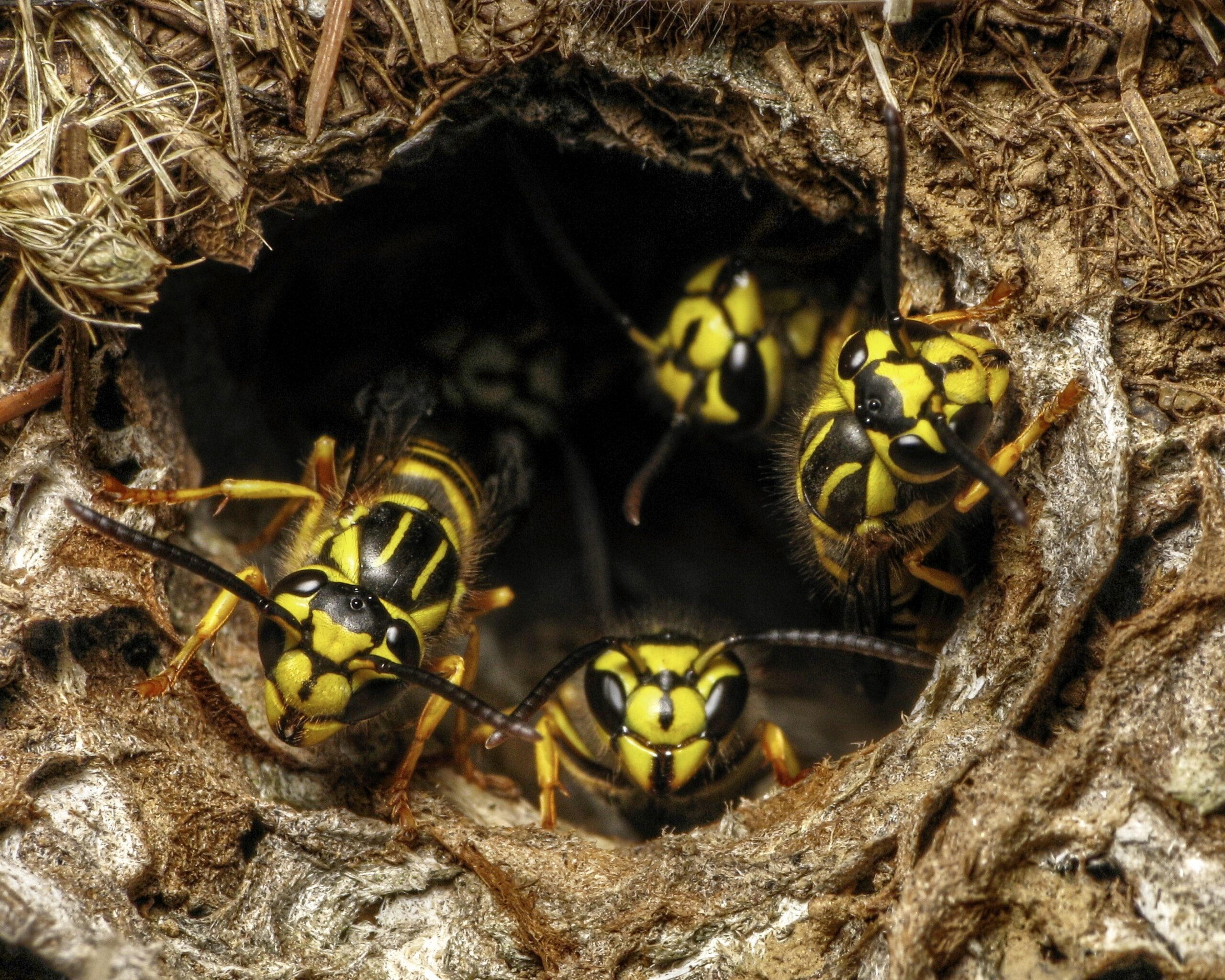
While some yellow jackets build nests up high on buildings, most prefer to keep their nests underground. In late spring, the queens create a nest just below ground-level. It’s often in populated areas, like in a backyard lawn. As the queen starts producing eggs and her offspring mature, they expand the nest to fit the hundreds of yellow jackets.
Our best guess as to why yellow jackets nest on the ground is safety. Other stinging insects build their nests on trees and buildings to keep their colony elevated for the same reason. An earth-toned nest under the ground is less likely to be found by their predators. It also makes it easier to accidentally disturb their nest, but more on that later.
When Are Yellow Jackets Active?
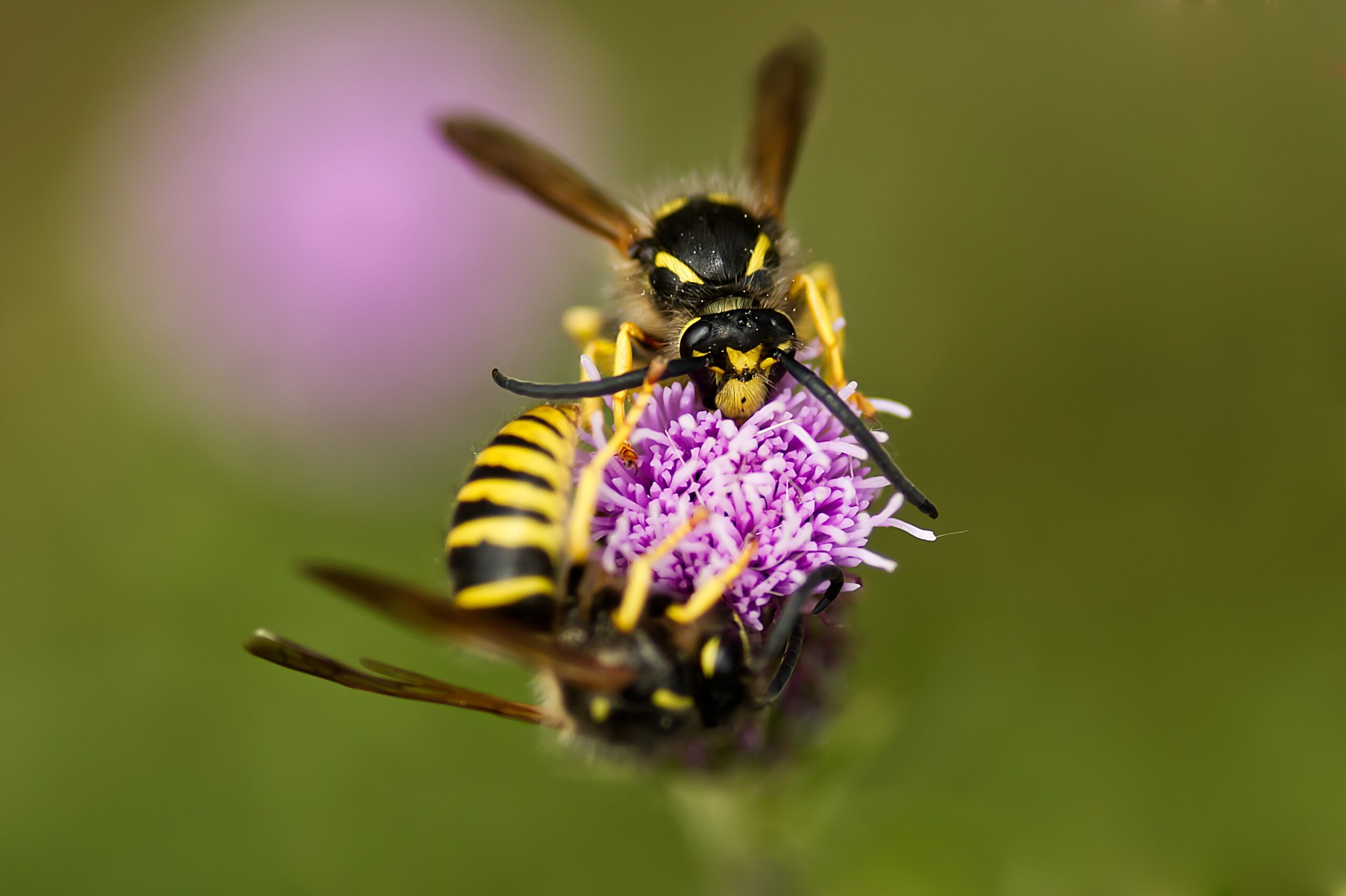
Basically, every spring marks the beginning of a new generation of yellow jackets. The queen overwinters in a safe location, then emerges in the spring to find a new nesting location and excavate the site before she lays eggs. The majority of the workers won’t be fully mature until late summer, hence why we see so many of them in August and September.
The workers are most active during the day because the heat gives yellow jackets more energy. It also makes them more aggressive, so that’s unfortunate for us. They spend their days scavenging for food and caring for both the nest and queen. By the end of fall, all yellow jacket workers are gone and the queen is searching for her new shelter.
What Are The Other Names For Yellow Jackets?
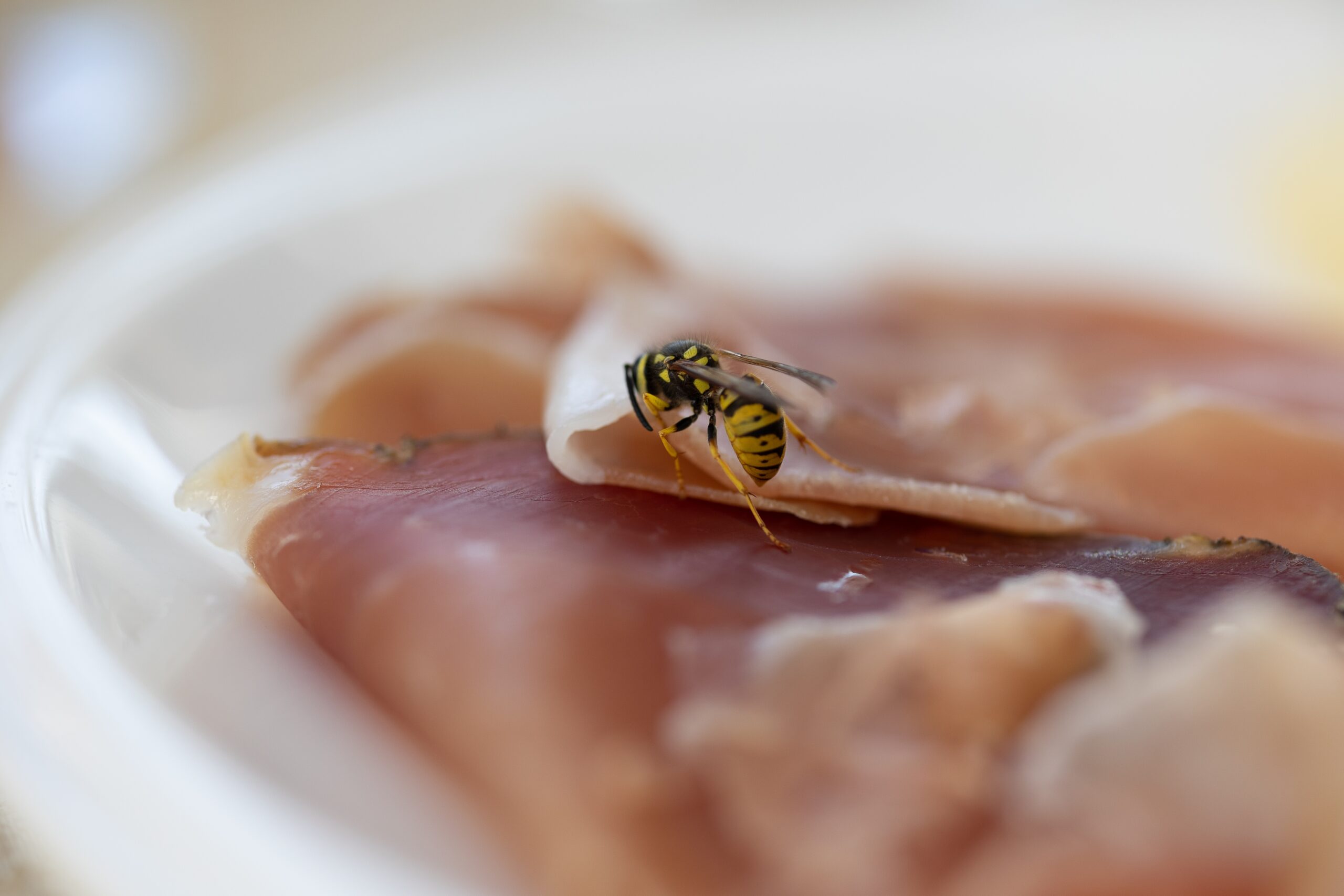
The name you’ve probably heard yellow jackets called the most is “meat bees.” They’re not bees, but they do love meat. Yellow jackets seek protein-packed food sources, such as meats, dry dog food, and insect grubs. They hover above these food sources to make sure it’s safe, then land and begin collecting.
Yellow jackets are also called “wasps” when they’re seen flying around. Yellow jackets are technically social wasps, so this isn’t a far reach. They’re also known as “predatory wasps” because they hunt other insects for food. All wasps are relatively angry and frustrating, so yellow jackets are just a specific type of wasp.
Why Are Yellow Jackets So Aggressive?
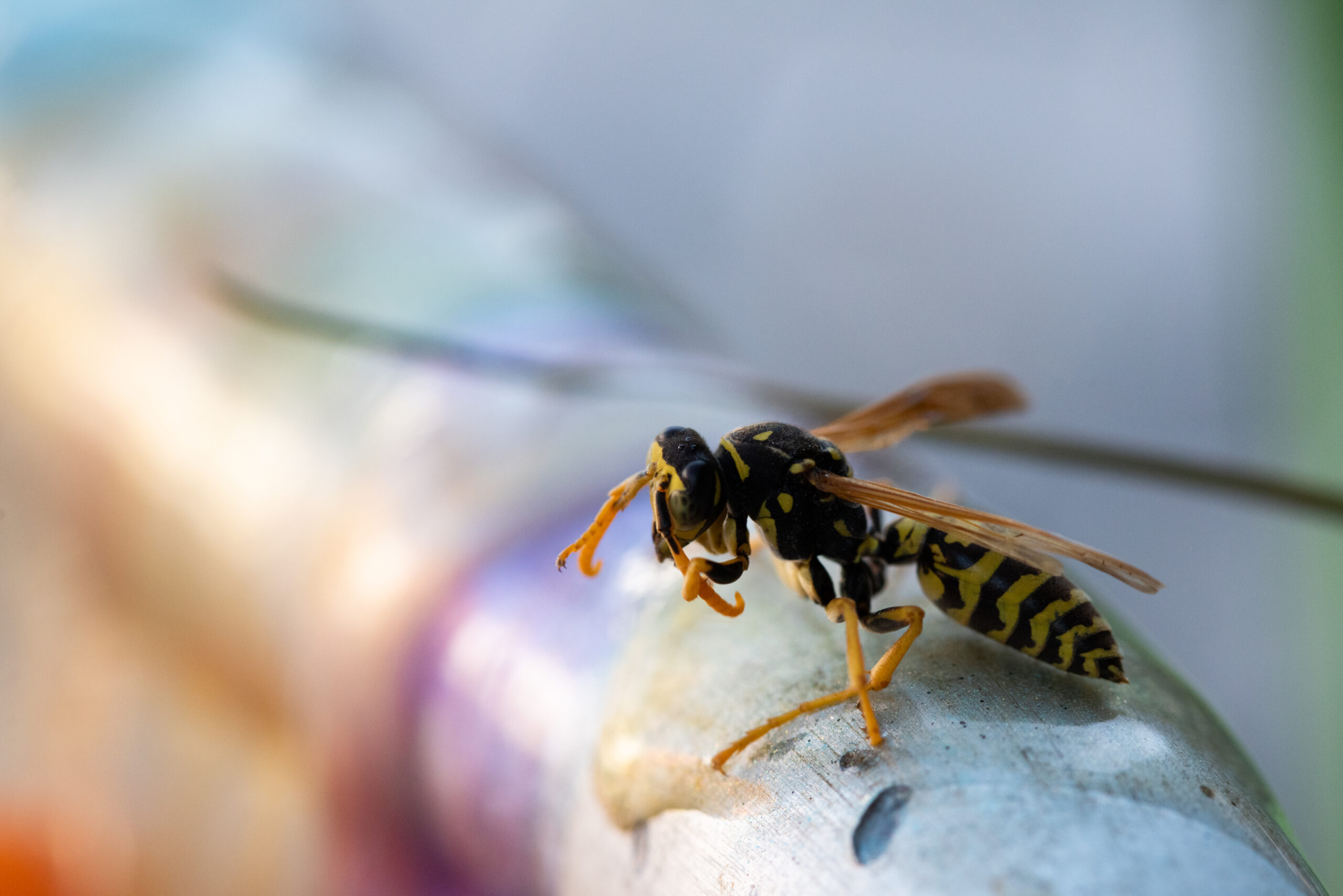
Like we said before, all wasps are pretty angry already. Yellow jackets also defend their nests with complete dedication and won’t hesitate to sting anyone who disturbs the colony. But there’s one key reason why yellow jackets seem so much angrier in the summer: they’re hungry! They are most active in late summer, which is when their food sources dwindle.
The combination of cooler temperatures, larger colonies, and fewer food sources means that a yellow jacket’s life is much less enjoyable in August and September. They get angry very quickly, so a packed nest full of yellow jackets isn’t a happy community. This makes them more aggressive towards anyone who gets too close to the nest or colony.
Are Yellow Jackets Dangerous?
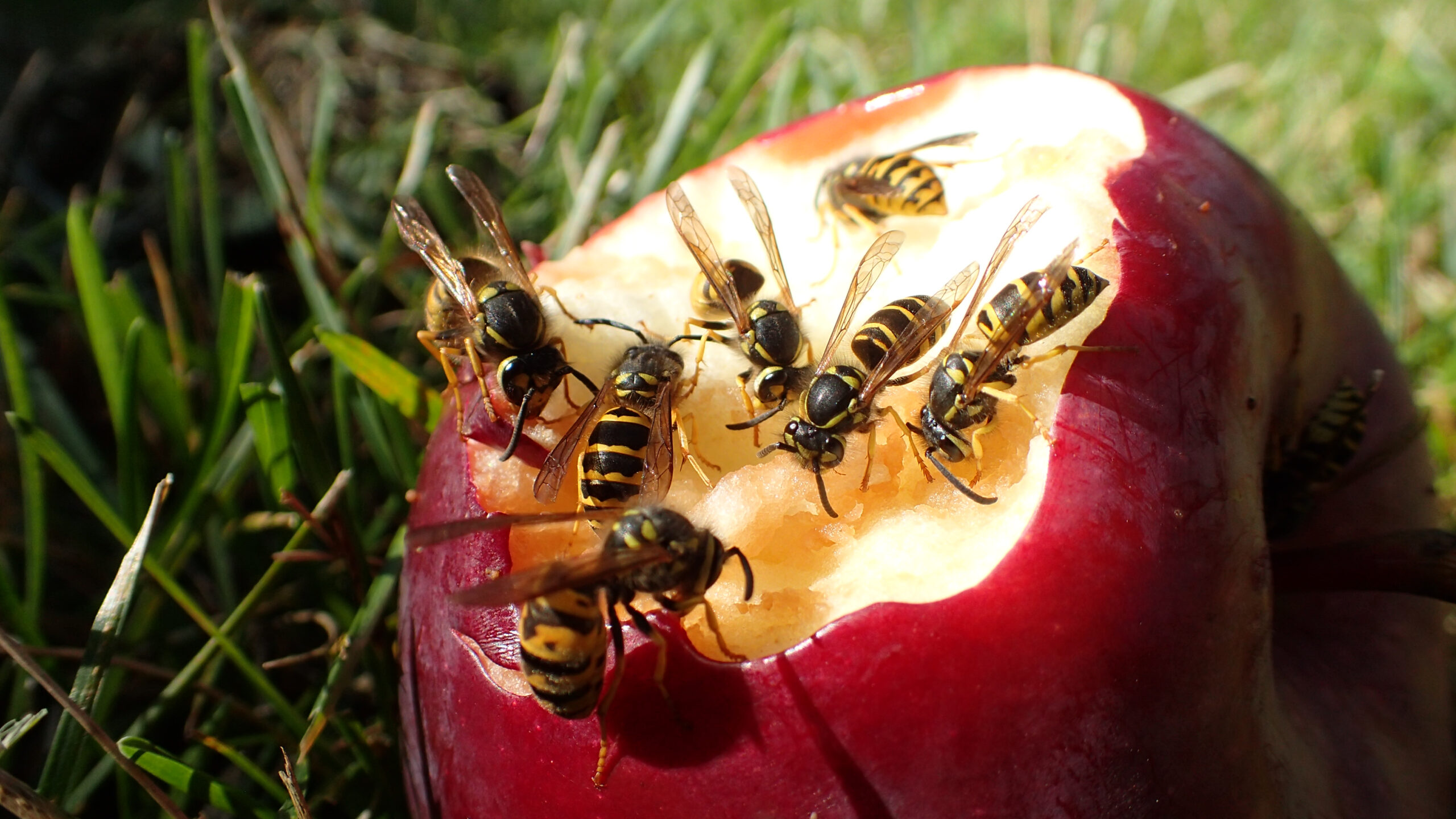
Since yellow jackets have smooth stingers — unlike bees, who have barbed stingers — they can sting humans repeatedly without dying. When there’s a threat, the responsive yellow jackets release an alarm pheromone (scent chemical) that brings the rest of the colony to the same spot. This is how swarms begin.
You may have heard a rumor that yellow jackets will chase people, but it’s actually not a myth! They’re drawn to movement, so yellow jackets will pursue their enemies as far as they can. Their stings are more painful than bee stings, but some people are also allergic to the venom produced from yellow jacket stingers. The most severe reaction is anaphylactic shock, which requires immediate medical attention.
Are Yellow Jackets Mean?
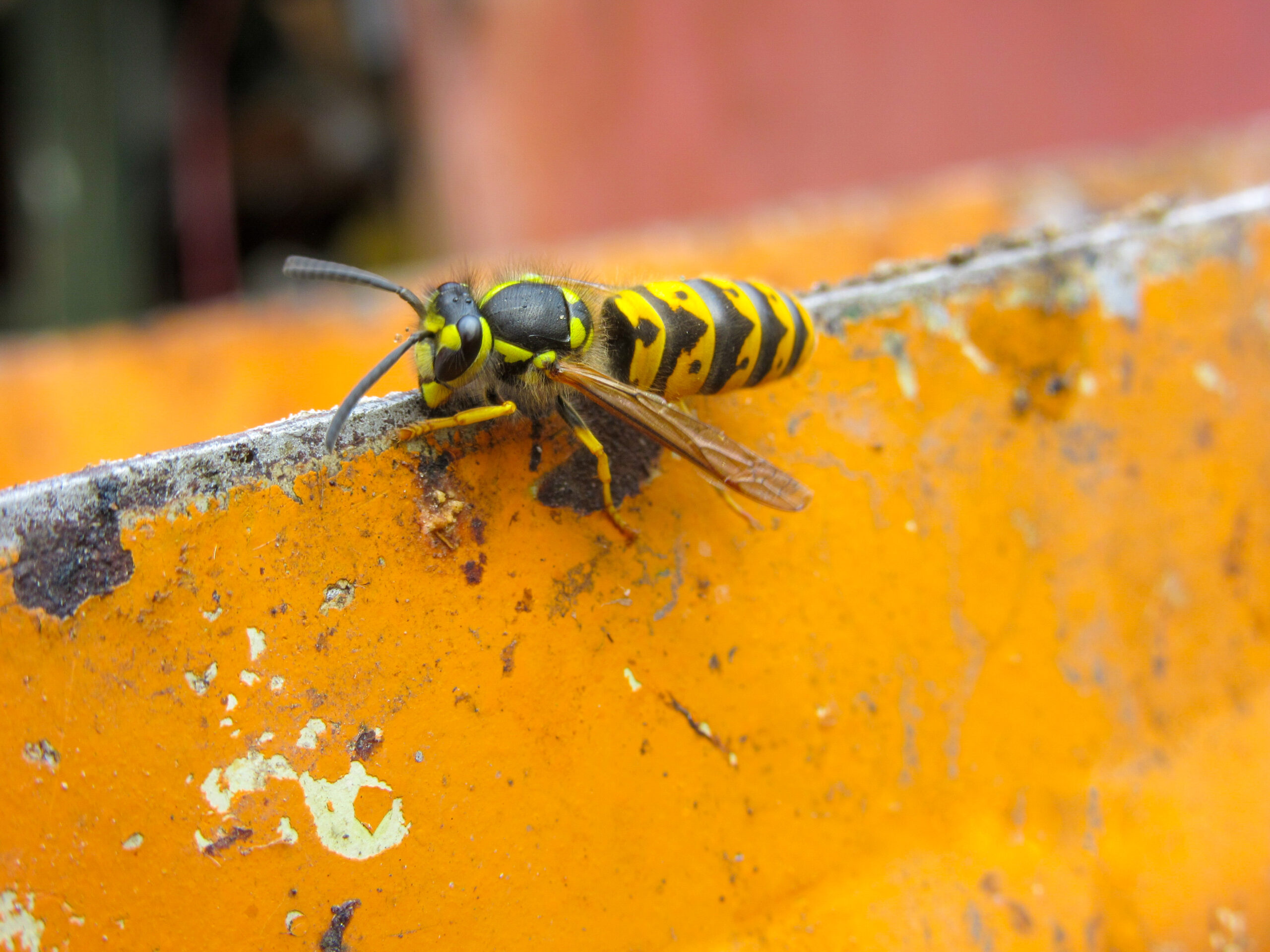
Basically, yellow jackets are bullies to people and insects. They are known for invading honey bee hives to kill the bees and use them for food for the yellow jacket larvae. Any perceived danger puts the yellow jacket on the defensive, and they won’t hesitate to attack any insect that is in their way. Bright colors and movement attract their attention as well.
Yellow jackets are also vengeful to humans who “wrong” them. We talked about them chasing us — sometimes even up to a mile! — and this also applies to being near bodies of water. For instance, if you jump into a pool to escape a yellow jacket swarm, they can hover above the water to wait for you to emerge.
Do DIY Treatments Work Against Yellow Jackets?
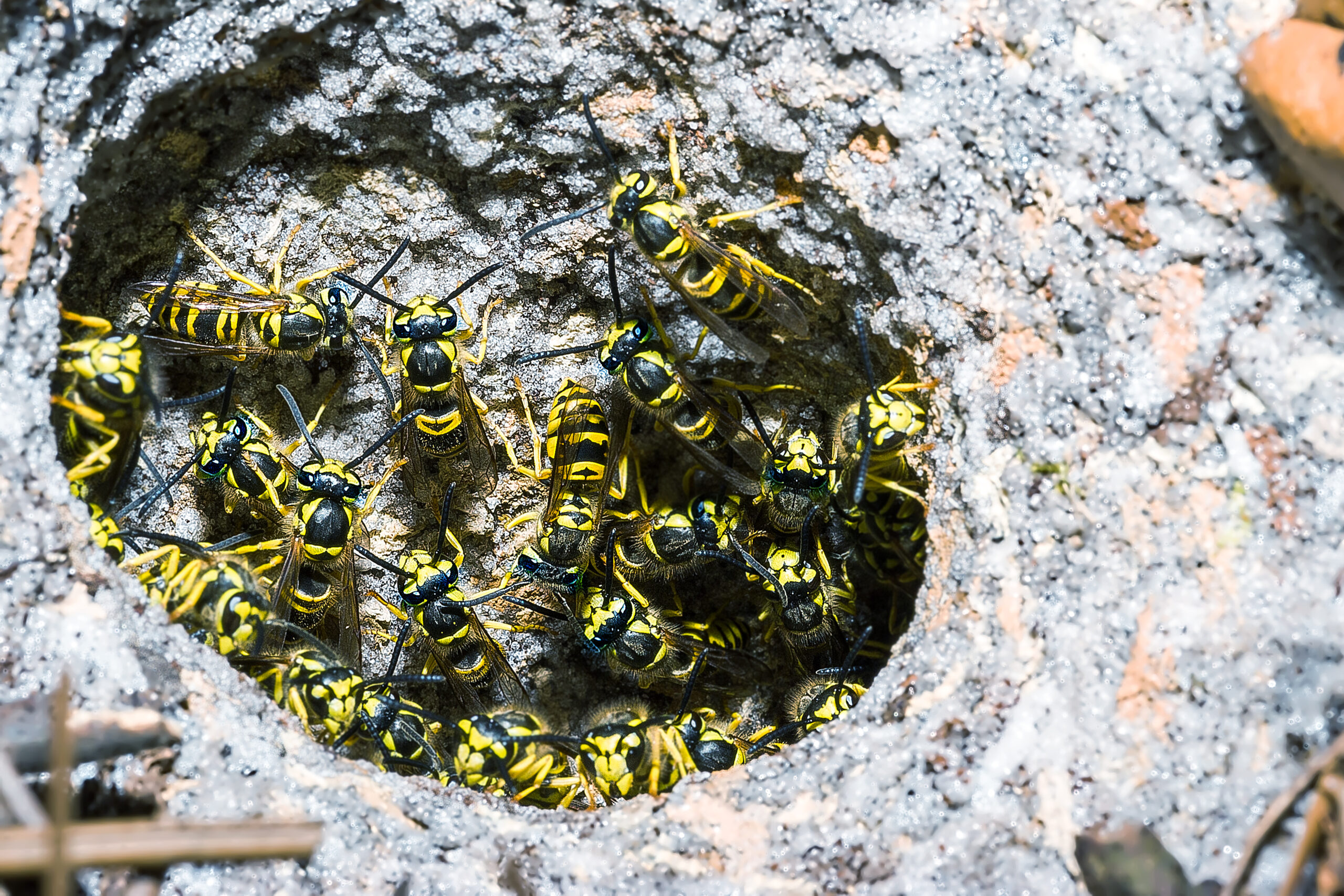
If you find a yellow jacket nest in your yard, your first thought might be to research DIY solutions to the problem. But we strongly recommend staying away from DIY treatments when it comes to yellow jackets. They’re aggressive, they’re numerous, and they’re quick. If the DIY solution fails, you’ll have an army of angry yellow jackets on your hands.
Let’s take a look at why popular DIY treatments don’t usually work:
- Pouring gasoline/bleach in the nest: While it’s a popular one, it’s not safe for anyone. Pouring these chemicals into the ground is dangerous for humans, animals, and the ecosystem. Plus, it’s not guaranteed to reach every single yellow jacket.
- Using wasp repellant: It might be effective against the yellow jackets near the nest entrance, but it won’t impact every insect in the colony. The yellow jackets in the deepest corners of the nest will escape the fate their brethren couldn’t and fly out to fight whoever is found nearby.
- Placing yellow jacket traps: Those sticky traps might work in reducing the larger yellow jacket populations, but they can’t eliminate the entire colony. The queen will never prematurely leave the nest, and as long as she’s alive, the colony will continue to grow and thrive.
- Filling the nest with water: Similar to the bleach/gasoline method, this will just result in a horde of agitated yellow jackets. You might be lucky and actually drown some of them, but a lot of them will crawl out before the whole nest floods — and they won’t be happy.
Green Pest Services Has The Answers To Your Yellow Jacket Problems
If you take one thing away from this blog, let it be the fact that yellow jackets are not a pest you want to mess with any time of year. Stinging insects are best left to the trained professionals who know how to safely eliminate these pests as soon as possible. At Green Pest Services, our dedicated technicians do not leave any part of a pest problem untreated. We solve each pest issue with a combination of thorough inspections, targeted treatments, and expert monitoring. We look forward to keeping your home or business pest-free, so contact us today to schedule your initial service with our experienced team!
Citations
Be aware of fall’s ground nesting yellowjackets. (2021, September 9). The Anson Record. Retrieved July 18, 2024, from https://ansonrecord.com/features/lifestyle/12334/be-aware-of-falls-ground-nesting-yellowjackets
DeJohn, S. (2023, September 14). All about yellow jackets, bees, and their kin. Gardener’s Supply Company. Available at https://www.gardeners.com/how-to/yellow-jackets/7700.html (Accessed on July 18, 2024).
Everything you need to know about yellowjackets. (n.d.). Pest World. Retrieved July 18, 2024, from https://www.pestworld.org/news-hub/pest-articles/everything-you-need-to-know-about-yellowjackets/
The dangers of a yellow jacket ground nest. Witt. Retrieved July 18, 2024, from https://www.wittpm.com/blog/post/the-dangers-of-a-yellow-jacket-ground-nest
Wesser, J. (2023, August 20). Why are yellowjackets so aggressive?. ABC27 News. Available at https://www.abc27.com/news/environment/why-are-yellowjackets-so-aggressive/ (Accessed on July 18, 2024).
Yellow jackets. (n.d.). Raid. Retrieved July 18, 2024, from https://www.raid.com.ar/en/bugs/stinging-insects/yellow-jackets
The Scariest Pests (And Why They Freak Us Out)
The Scariest Pests (And Why They Freak Us Out) The Scariest Pests (And Why They Freak Us Out) Summary: A practical, homeowner-friendly guide [...]
Favorite Foods of Rats and Mice
Favorite Foods of Rats and Mice Favorite Foods of Rats and Mice Summary: Rats and mice are surprisingly picky about what they eat—especially [...]
Where Do Spiders Like to Hide? A Locals’ Guide to Sneaky Spider Spots (and What to Do About Them)
Where Do Spiders Like to Hide? A Locals’ Guide to Sneaky Spider Spots (and What to Do About Them) Where Do Spiders Like to Hide? [...]
Why Do We See So Many Pests in the Fall?
Why Do We See So Many Pests in the Fall? Why Do We See So Many Pests in the Fall? Summary: Fall’s cooler [...]
Why German Cockroaches are Such Problem Pests (And How to Get Rid of Them)
Why German Cockroaches are Such Problem Pests (And How to Get Rid of Them) Why German Cockroaches are Such Problem Pests (And How to Get [...]
Summer is Ending, But Pests are Still Going Strong
Summer is Ending, But Pests are Still Going Strong Summer is Ending, But Pests are Still Going Strong Summary: Summer is coming to [...]

